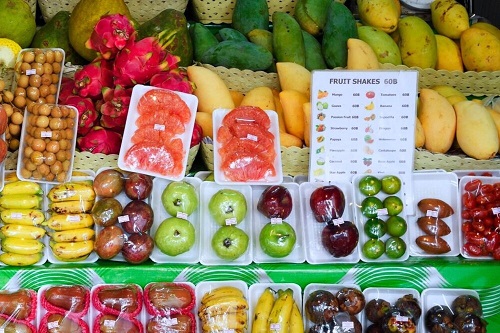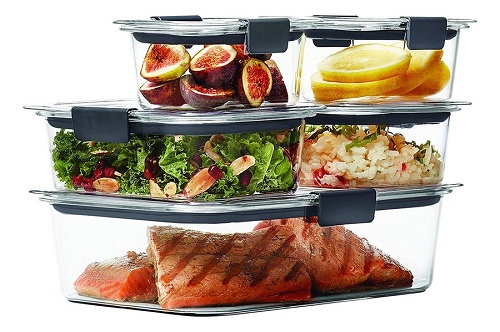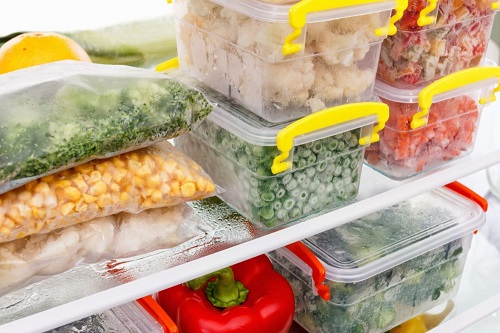Selling food in stores calls for a business to create safe and appealing products. The presentation equally is enough to make consumers prefer your product over the many available options. Packaging cooked food for sale will not however immediately satisfy you if you see happy eaters choose your offerings. In the long run, it enables you to please a big number of consumers. The reality is that the process is expensive and quite time-consuming. But developing a solid infrastructure and systems can shape your business to achieve its lasting potentials. Read on for all you need to know for the best results.
Why should you Package Food for Sale?
Preserve its freshness
Packaging has different meanings for various food types. Of course, the market has no standard solution for businesses that keeps freshness. However, there are tested and proven conventions in diverse areas. For instance, wrapping fresh bread in paper bags helps keep its crunchy crust. Equally, some loaves are packed in plastic to make it moist enough.
Marketing communication
Packaging plainly and indirectly conveys about a product to the customers. For instance, nondairy drinks can be packed in a milk can to show that it suits as a beverage substitute. Likewise, wrapping bars of chocolate in kraft papers convey that the manufacturer is highly concerned about the product and not its packaging.
Portability
One reason that leads to packing food is that customers cannot carry it home if it is not wrapped. For example, the soup will never reach any place except for the mouth without the right container. Cereals like beans or rice require bags, boxes or jars to hold them. Other types of food products also need to be packed into multiple pieces. This way the users can conveniently access the units at once.
Labeling
The law requires product manufacturers to provide related details on labels. These include volume, weight, ingredients, requirements of storage and cautions of whether it contains allergens. The information must indicate whether this product allows for refrigeration or not. This practice is also a perfect way to convey marketing communication using texts, fonts, and information.
How should you Pack Shelf-Stable Foods?

Naturally, shelf-stable items become unsteady and unpreserved if not specially processed or made to prolong the shelf lives. Preserved sauces and foods including salad dressings are heat-treated to destroy bacteria. The cans are then covered to keep away pathogens and any other bacteria that may compromise the length of time on the shelves. When packaging the products then ensure it is properly treated and sealed. It would be wise to contact a lab to tests the safety of this product. Granted, this way you ensure that all the processes of operations are safe and accessible.
On the other end, there are some products that are shelf-stable including grains, cookies, and crackers that do not require the same amount of handling. However, the packaging process of such foods will, in the end, impact the general shelflife. Prevent the chances of the foods going stale by presenting them in airtight cans. If there is a large scale packaging of the product, then it would be worth investing in equipment that ensures there are vacuum filling and also heat sealing. In case, the packaging is for products that are consumed soon and on a small scale, then zipper bags or twist ties will be handy.
For pasta, dried grains, and beans airtight packaging is not a necessity. So this provides a lot of flexibility as you choose the right packing material for use. While paper bags will offer that comfortable feeling, the plastic packs enable prospective customers to see the contents of the pack easily. Even though such foods have longer shelf lives that create an impression of lasting for life, eventually as other products they will become stale. It will therefore still be necessary to test its shelf life and clearly mark the dates. The tags should be placed even if the days are still distant in the future.
How should you Pack Refrigerated Foods?

Refrigeration prolongs shelf life because it slows down bacterial growth. the bad side is that the process tends to dry out the food and causes stale tastes. Yes if there are many products within the same space of the fridge smells are imparted from one to another. Foods that are packed and retailed from cooler shelves must be handled specially. This server better those that are prepared when hot and chilled before putting into containers. Soups and completely prepared meals need to be entirely chilled before packaging. This precaution prevents condensation that turs out to be visually unpleasant. Besides, this ends up compromising the shelf life and the quality of food.
Such products, therefore, needs to be packed in sealed containers. This can be achieved by simply closing, as it happens with plastic cans that have lids to be snapped-on. Also, jars having tops that are easily tightened by hands are applicable. Even though the methods appear low-tech, using them still gives the chance to put a seal or sticker that marks the product free from damage.
When packaging many dozens of refrigerated foods to be sold at a local market or for distribution to other local stores, it is satisfying to do the packing using hands without any special tools. But, if the delivery is planned for a larger scale, then it is ideal to perhaps find a specifically made packaging equipment. Choosing this means the cooked items will not be interfered with in any way.
Packaging Cooked Frozen Products

Frozen cooked foods also bring a lot of similar issues to refrigerated products when pacing. However, this process will additionally present the challenge of avoiding freezer burn. Of course, freezing method prolongs shelf life more than what refrigeration does. Keep in mind that this advantage comes along with a considerable amount of expenses and may need extra equipment.
Prevent burns from causing burns by lowering the temperatures of the food below its freezing point immediately. In case the item has high moisture levels, wait until everything gets completely frozen to seal the packages. Perhaps consider investing in a blast chiller which is vital equipment to help in freezing cooked foods.
Because of the solid nature of such foods, it is good to choose packing materials that will keep up with the cold temperatures. The most ideal one should be thick enough to keep the items against freezer burns. The plastic bags that are perfect for freezable and shelf-stable products can be thinner so will not protect the frozen meals. Remember some containers may break when the freezing temperatures are reached. So ensure you choose the ones made from things that handle the storage temperatures.
Pricing and Customization
One way to package visually appealing and professional foods is to use custom-printed materials. However, the price tag may turn out to be frightening, particularly if the design contains a range of colors. The good thing is that printing larger quantities means lower prices for every unit. Remember if you are still developing the differences in food recipes, then printing a long-lasting stock of packaging will not make sense. Only opt for that if there are no major changes anticipated in the product, packaging or marketing message.
Luckily, if the available resources are enough, then create solutions that can meet the budget. Likewise, ensure you get a way of marketing the product in an attractive package without breaking the bank. The internet is a good place to start when seeking label layouts and templates. Also, from there you can find packaging materials that will definitely keep up with the frozen and refrigerated environments. Laser printers will produce texts that do not bleed in moist conditions.
While the market offers both packaging and labeling solutions that can be launched with low investment, go for something that enables you to meet trade-offs and efficiency. Packing in preprinted bags takes minimal time unlike adding stickers before filling the product inside. Settle for a solution that fits into your budget and the level at your company is currently. Then as you mature improve the option.
After convincing a store to sell your cooked food product, look for a way of reaching out to the shoppers by enticing them. Offering initial discounts and friendly prices will call attention.
Finally, the packaging for cooked food for sale has a decisive part in most customer’s buying decisions. For the success of your business use a packaging material that preserves the freshness of the item and also entices people to purchase. The visually appealing products like a mixture of colored peppers, choose clear packs to display it.
Remember to list the ingredients, nutritional analysis and information regarding its winning points. Taking such steps will not only entice buyers but also will further tell whether the items are highly perishable or have gone stale. Whether the foods for sale are home-baked or canned, it is vital to understand how to package cooked food properly to sell the stock.




